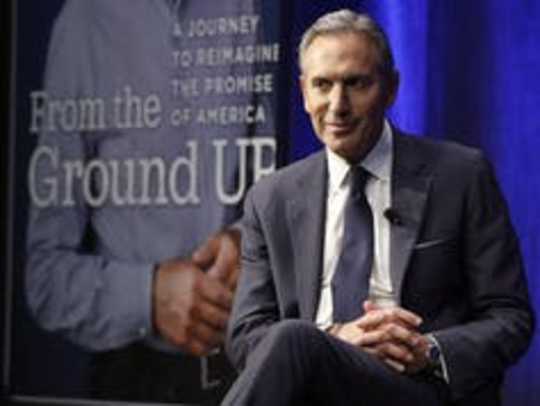 U.S. President Donald Trump has often been documented bullshitting. In a business setting, however, bullshitters can be harder to identify. (AP Photo/Alex Brandon)
U.S. President Donald Trump has often been documented bullshitting. In a business setting, however, bullshitters can be harder to identify. (AP Photo/Alex Brandon)
What’s colloquially known as “bullshit” occurs when people make statements with no regard for the truth, and unfortunately, it is more prevalent than ever.
Thankfully, we can all stem the production and spread of bullshit in our workplaces by applying the CRAP framework from our recent academic paper, “Confronting indifference toward truth: Dealing with workplace bullshit.” The framework consists of four steps: Comprehend why bullshit exists; Recognize when it is produced; know how to Act against it; and Prevent it from occurring.
Comprehending bullshit
In his 1985 essay “On Bullshit,” philosopher Harry Frankfurt distinguished between bullshit and lying. Lying occurs when individuals know the truth and misrepresent it. Bullshitters don’t care what the truth is.
For example, in 2018, U.S. President Donald Trump erroneously told Canadian Prime Minister Justin Trudeau that Canada had a trade deficit with the United States, but later admitted that he had no idea if there was a deficit.
 Trump admitted he bullshitted Trudeau. THE CANADIAN PRESS/Sean Kilpatrick
Trump admitted he bullshitted Trudeau. THE CANADIAN PRESS/Sean Kilpatrick
Trump’s admission revealed that he was bullshitting, a practice he evidently often engages in. This freedom from truth means that leaders who bullshit are more dangerous than those who lie, because they say whatever it takes to further their agenda.
I want everyone to understand this. In the midst of #CoronavirusPandemic during which tens of thousands of Americans are dying, Trump’s biggest worry and complaint is getting judges approved! He is unfit for office. #TrumpPressConf #TrumpPressConference #COVID19 #COVID
— Ron Waxman ?????????? (@RonWaxman) April 15, 2020
Understanding this distinction between bullshit and lying is essential. We can reveal a lie by uncovering the truth, but dealing effectively with workplace bullshit is more complicated.
Recognizing bullshit
Bullshit is designed to appeal to an audience — and to hide that it is not supported by evidence or logic. It often appears in the form of cliches, platitudes or business jargon that seem meaningful but upon closer examination are empty.
 Schultz was accused of being a champion bullshitter after describing a ‘coffee-forward’ experience at his coffee chain. (AP Photo/Kathy Willens)
Schultz was accused of being a champion bullshitter after describing a ‘coffee-forward’ experience at his coffee chain. (AP Photo/Kathy Willens)
For example, in 2017, Howard Schultz, the executive chairman of Starbucks, announced that the coffee chain’s new roasteries would provide “an immersive, ultra-premium, coffee-forward experience.” Financial Times writer Lucy Kellaway responded by describing Schultz as “a champion in the bullshit space.”
Bullshit can also be enhanced by using data and visualization techniques that conceal, distort or obfuscate the truth. Technological advances such as deepfakes, where a fake image of a person can be created and manipulated, can make bullshit seem more convincing. Unfortunately, when it comes to recognizing bullshit, we can’t always believe what we see and hear.
Some workplace bullshitters will have a discernible personal agenda, and uncovering that agenda will help us see through their efforts. However, others are passing on bullshit unknowingly because they naively trust what they have been told. In the words of Ted Sorensen, a lawyer and onetime adviser to late president John F. Kennedy, many employees “develop a confidence in [their own] competence which outruns the fact.”
Acting on bullshit
When you recognize bullshit in your workplace, what should you do about it? We draw on renowned researcher Albert Hirschman’s ideas to propose four possible responses: “voice,” “loyalty,” “neglect” or “exit.”
Voice is when employees speak up. They ask to see evidence that supports the suspected bullshit, or offer counter-evidence or logic to challenge it. When employees feel that they won’t be punished for speaking up against bullshit, they are more likely to do so.
 Employees might speak out against workplace bullshit if they don’t fear they’ll face some bullshit punishment for doing so. (Pixabay)
Employees might speak out against workplace bullshit if they don’t fear they’ll face some bullshit punishment for doing so. (Pixabay)
However, employees may also react in ways that allow and even enable bullshit. Some may react with loyalty, perhaps out of allegiance to the bullshitter, or because they find the bullshit personally appealing. On the other hand, other employees may react to bullshit by neglecting their work, withholding effort and disengaging from their jobs.
Finally, employees may become so frustrated with bullshit that they exit their organizations, or at least change jobs to escape a bullshitting boss.
Preventing bullshit
Business leaders can deter bullshit directly by requiring communication that is clear, evidence-based and jargon-free.
 Musk railed against manufactured acronyms at SpaceX, suggesting they were bullshit. (AP Photo/Susan Walsh)
Musk railed against manufactured acronyms at SpaceX, suggesting they were bullshit. (AP Photo/Susan Walsh)
In 2010, Tesla and SpaceX CEO Elon Musk sent an email to employees, warning of “… a creeping tendency to use made-up acronyms at SpaceX. Excessive use of made-up acronyms is a significant impediment to communication.”
Critical thinking can stifle bullshit production and proliferation. It values evidence over opinions and expertise over egalitarianism, so that decisions are based on fact rather than hunches, myths or anecdotes. Business leaders should practise and expect careful analysis and presentation of information.
Business leaders should also stamp out useless committees and meetings. Bullshitters can exploit meetings that are poorly organized and run by using them to promote or legitimize their bullshit. Leaders should only establish committees and have meetings with clear terms of reference and agendas, and appoint members who have critical thinking mindsets and the appropriate expertise.
We opened this article by stating that bullshit is more prevalent than ever. However, this was bullshit, because we don’t have evidence to support this claim. But we have heard many employees are unhappy with the amount and impact of bullshit in their workplaces, and we are watching public figures bullshit every day.
So by applying the CRAP framework, we can all deal more effectively with workplace bullshit.![]()
About The Author
Ian McCarthy, Professor, Operations Management, Simon Fraser University; David R Hannah, Associate Professor of Management, Simon Fraser University, and Jane McCarthy, Instructor and Researcher, Manufacturing Management, Simon Fraser University
This article is republished from The Conversation under a Creative Commons license. Read the original article.

Related Books:
Crucial Conversations Tools for Talking When Stakes Are High, Second Edition
by Kerry Patterson, Joseph Grenny, et al.
The long paragraph description goes here.Click for more info or to order
Never Split the Difference: Negotiating As If Your Life Depended On It
by Chris Voss and Tahl Raz
The long paragraph description goes here.Click for more info or to order
Crucial Conversations: Tools for Talking When Stakes Are High
by Kerry Patterson, Joseph Grenny, et al.
The long paragraph description goes here.Click for more info or to order
Talking to Strangers: What We Should Know About the People We Don't Know
by Malcolm Gladwell
The long paragraph description goes here.Click for more info or to order
Difficult Conversations: How to Discuss What Matters Most
by Douglas Stone, Bruce Patton, et al.
The long paragraph description goes here.s























